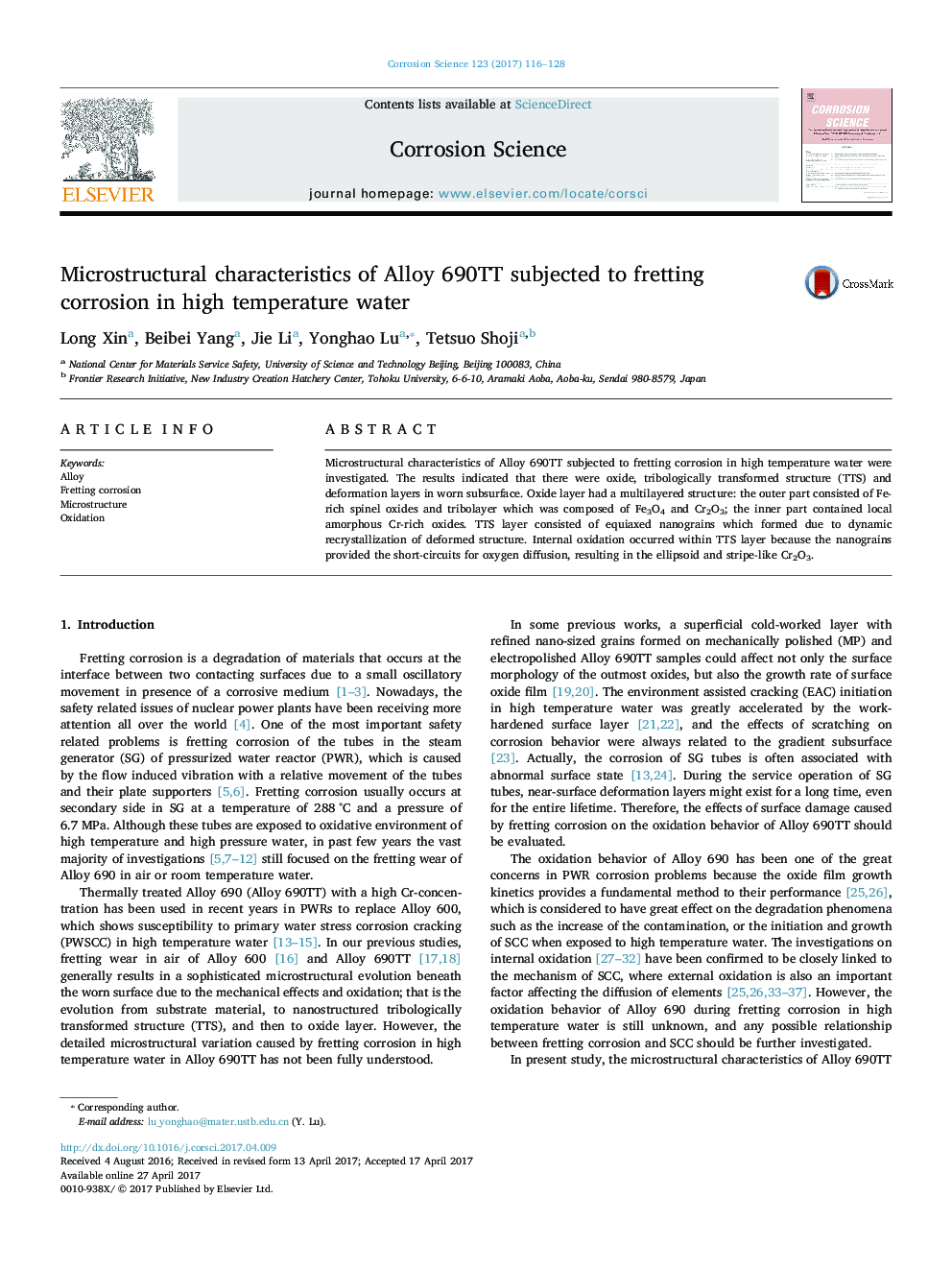| Article ID | Journal | Published Year | Pages | File Type |
|---|---|---|---|---|
| 5439988 | Corrosion Science | 2017 | 13 Pages |
â¢Microstructures during fretting corrosion in high temperature water were studied.â¢Formation of TTS was attributed to dynamic recrystallization of deformed structure.â¢Outmost Fe-rich spinel oxide was due to the solid-state growth and precipitation.â¢Fretting resulted in the mixing tribolayer of crushed Fe-rich and Cr-rich oxides.â¢Internal oxidation occurred in TTS due to short-circuits of its ultra-fine grains.
Microstructural characteristics of Alloy 690TT subjected to fretting corrosion in high temperature water were investigated. The results indicated that there were oxide, tribologically transformed structure (TTS) and deformation layers in worn subsurface. Oxide layer had a multilayered structure: the outer part consisted of Fe-rich spinel oxides and tribolayer which was composed of Fe3O4 and Cr2O3; the inner part contained local amorphous Cr-rich oxides. TTS layer consisted of equiaxed nanograins which formed due to dynamic recrystallization of deformed structure. Internal oxidation occurred within TTS layer because the nanograins provided the short-circuits for oxygen diffusion, resulting in the ellipsoid and stripe-like Cr2O3.
